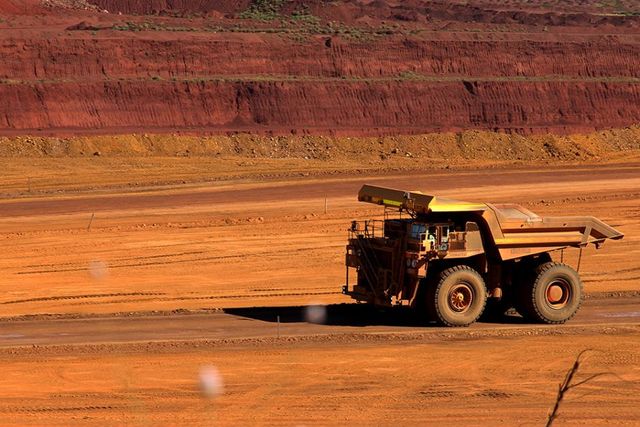The mining game - a wild ride - and the best thing CEO's and Boards can do..

The mining game - a wild ride - and the best thing CEO's and Boards can do..
Welcome to my first official on-line blog.
That said I have been managing the editorial process and writing the printed newsletter of Mining People International, MPi News for some 17 years. This blog though will be more personal, aimed directly at people like you in senior executive roles, within this most magnificent, volatile, fun, expensive, stressful and adventurous business called mining.
Any others who find it interesting are also free to subscribe.
The blog title MINING PEOPLE MATTERS, can be interpreted a number of ways depending upon the word you emphasise most. However you look at it though, the articles will be aimed at people who influence others and who care and they will be couched in a mining industry context.
I want feedback.
Please email me directly at steve.heather@miningpeople.com.au.
I aim to share views that you’re less likely to hear from HR specialists although to be clear I have nothing against HR people – they are critical contributors within modern business today. My own experience though is a blend of half a working life in unique practical mining management environments and the other half in training, learning & development and related sales environments.
I have counselled many mining executives in the process of:
- · Transitioning their career (and life).
- · Transitioning an exploration business into a mining business.
- · Transitioning a small mining business into a big one and,
- · Transitioning a big mining business into a small one.
To my eye, the 4 th category is actually more prolific with many people possessing the relevant experience!
I am being cheeky here of course, but truthful none the less. Growing mining companies is a very tough gig with a high failure rate and large stresses placed on the senior executives.
It is not for the feint hearted!
I like practical information which helps influencers solve seemingly difficult people issues, impact others positively and negotiate the right people and the wrong people, in and out, of their businesses.
As well as constantly clarifying a vision, these are after all some of the more critical functions of a great senior executive as well as being able to do these things with grace and a sense of respect for those being dealt with.
Not long after I qualified as a Mining Engineer I was given my first job as a (very naive) shift supervisor. Clearly I had no clue as to how to deliver instructions and feedback with grace and respect. I knew instantly I didn’t know this after a very experienced underground miner proceeded to throw a chain saw at me during our morning briefing! Fortunately it was not running at the time.
It was a clarifying moment.
Mining is my industry of choice and so I always look to put things into that context where possible.
Some examples –
Big miners v small ones and explorers vs producers:
I find it funny (in a perverse way) to hear the general media report on the mining industry as if it is one homogenous beast – and I use the word beast purposely, as sadly, as important as our industry is to Australia and many other countries, its reputation and the perception of the general public of it, falls well short of the actual value it adds.
All good mining exec’s need to be aware of this.
Back to the perception of a homogenous beast – the default assumption (in the general media and public) is that BHPB Limited is the same as $2.5m IPO Limited.
In reality one is a global factory/mid sized sovereign country, guided considerably (as it should be) by its team of economists and politicians. The other is akin to a small R&D laboratory betting everything on finding the next big wonder drug.
They are not even in the same universe let alone the same stock market classification.
Ore bodies vs auto production factories:
You can design a factory using Kaizen principles to do things exactly the same way, almost 99% of the time. When something goes wrong it is usually because a human made an error.
You can also design a mine or a mineral processing plant to do things a certain way, also 99% of the time. The difference though is that this assumes, that what mother nature serves you up that day in the form of the ore body, is exactly as per the ore reserve analysis or the metallurgical test work (often done years before) said would be there.
We all know of course that this is not what happens!
This is where the work that people do comes into play and where I see many companies getting it wrong.
The ore body rules – everything – including the types of people you should employ.
Big companies demand certain types of people. Small companies demand other types of people.
As well as big vs. small and explorer vs. producer at say the corporate level, most operational environments also demand that the concept of the ore body ruling, needs to be top of mind.
Senior operational managers as entrepreneurs..
People with senior operational responsibilities, must be good planners and technicians and obviously great people managers. I get that, however the broader context is that running a mining business, even if it is someone else’s business, remains still very much an entrepreneurial pursuit, with the best leaders knowing innately that the embedded vagaries of ore bodies, will throw them wild curve balls hourly and consistent with the most volatile of all business environments.
These remarks could appear to be at odds with the concept of placing quality, risk management and specifically OHS&E, at the very top of attention priorities. Not at all, but someone who approaches an operating mining or mineral processing environment with an inflexible, staid, one speed approach, with no ability to modify their plan on the run and whose default response to all issues is to refer to the manual, will, in my experience, eventually fail in these jobs.
The best things Mining CEO’s and boards can do..
To go back up a level, the best things CEO’s and boards can do (once strategy is resolved) is to:
1. Agree on a corporate culture that acknowledges the particular requirements of the commodity you are chasing or the one you are mining.
2. Describe that culture clearly and consistently.
3. Recruit key people who fit it and then allow those people some space.
Lastly, use external help for sure, but be wary of allowing 3rd party influences to overly complicate things.
I’ll share more on this later, but meanwhile please remember that feedback to steve.heather.com.au and importantly..
THANK YOU, for getting this far!
I trust 2013 has started well for you and that you have a wonderful year ahead.
Best wishes for now.
Steve Heather
